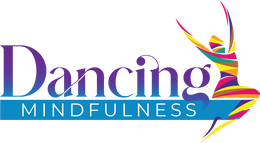 If you are reading this article, then you probably already know that dancing has psychological as well as social, cognitive, and emotional, not to mention physical benefits. But did you know that our body has its own language? That each organ, vessel, tissue, and muscle has a voice and that we can use the mind body connection to become fluent in the language of our body? This is different from body language which we know to make up about 80% of what we express. Body language is a nonverbal communication where feelings and emotions are expressed physically. This might take the form of an eye roll to express disdain, a dropped jaw to express amazement, or raised shoulders to communicate confusion or misunderstanding. I am talking about the feelings and emotions that may be hidden, trapped, or even silenced in the body. Where does our voice go when we have been forced to silence it? What happens to our desires and needs when they are shown not to matter? Do they disappear? No, they become part of our bodies’ internal communication. As a dance therapist, I see this in my practice all too often. A client might have a physical ailment that is not described by a physical injury or issue. Instead it seems to be a manifestation of psychological distress; a psychosomatic symptom. One basic example that most of us have experienced is a tension headache. Here is a physical symptom of an emotional trigger. Now, what about an individual who has been sexually abused? Often times, there is an inability to verbally process what has occurred. Either the words are not accessible or the person cannot confront what has happened. Take a moment to sit with the fact that the body is talking. The body has so much to say if we only give it the opportunity, but we feel the need to express verbally through formal language and if that is not present, then we must wait until it is or assume everything is “ok.” In dance/movement therapy, we utilize the mind body connection to allow the body to do the talking. The ability to be mindful and aware of what our body is saying is not an easy task and can even invoke fear or anxiety. It’s important to know that when words are not accessible or enough to communicate the severity of a situation, that the body can speak for itself. We are all using our bodies to communicate, relate, and be in this world on a daily basis. Using the body to express what is already there can rejuvenate, uplift, and open an individual to his/her full potential. Know that whatever you may be going through, your body is carrying it. The ability to connect the body and mind allows for a more holistic approach to mental health, greater compassion, empathy, and even safety. If dancing is your release, your path to healing, then embrace all the movement your body does every day. Finding a way to connect to your body’s internal language can free your mind to express what has always been there and create space for what’s to come. Erica Hornthal, MA, LCPC, BC-DMT, is the founder and CEO of Chicago Dance Therapy, which is dedicated to providing dance/movement therapy and clinical counseling to individuals, couples, families and groups. Erica received her MA in Dance/Movement Therapy and Counseling from Columbia College Chicago. She is passionate about helping individuals of all ages increase their quality of life by emphasizing the mind-body connection to enable growth and healing. As a movement therapist, Erica uses body movement every day with her clients to provide the means of assessment and the mode of intervention in therapy. Her work has been highlighted in Social Work Magazine, Natural Awakenings, Fox, WGN, and WCIU. Twitter: @EricaHornthal @CHIDanceTherapy Instagram: chicagodancetherapy Facebook: www.facebook.com/chicagodancetherapy Website: www.chicagodancetherapy.com
0 Comments
|
Dr. Jamie MarichCurator of the Dancing Mindfulness expressive arts blog: a celebration of mindfully-inspired, multi-modal creativity Archives
September 2022
Categories
All
|
Contact |
Memberships & Affiliations |
|
Please direct all inquiries to:
[email protected] © Mindful Ohio & The Institute for Creative Mindfulness, 2021 Terms of Use Privacy Policy |
Dancing Mindfulness/The Institute for Creative Mindfulness is an organizational member of the International Association of Expressive Arts Therapists, the Dance First Association, and NALGAP: The Association of Gay, Lesbian, Bisexual, Transgender, Addiction Professionals and Their Allies; Dancing Mindfulness proudly partners with The Breathe Network and Y12SR: The Yoga of 12-Step Recovery in our shared missions.
|

 RSS Feed
RSS Feed